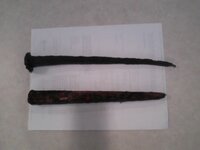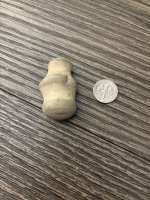keywesttdiver
Greenie
- Jun 4, 2011
- 14
- 2
Can anyone tell me about how old this iron shipwreck spike is? To compare...the top spike with a square head is from the Atocha [1622]. The bottom spike is totally round, very heavy. I was told the round one is older than 1622...is this true? Thanks! P.S. This is my first pic post not sure if i did it right!





